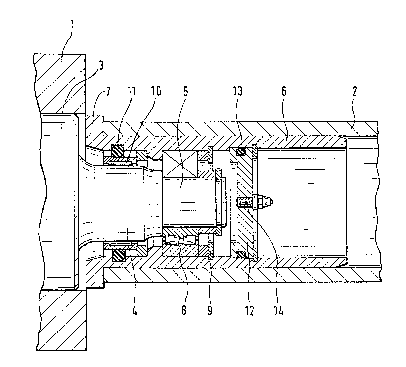Une partie des informations de ce site Web a été fournie par des sources externes. Le gouvernement du Canada n'assume aucune responsabilité concernant la précision, l'actualité ou la fiabilité des informations fournies par les sources externes. Les utilisateurs qui désirent employer cette information devraient consulter directement la source des informations. Le contenu fourni par les sources externes n'est pas assujetti aux exigences sur les langues officielles, la protection des renseignements personnels et l'accessibilité.
L'apparition de différences dans le texte et l'image des Revendications et de l'Abrégé dépend du moment auquel le document est publié. Les textes des Revendications et de l'Abrégé sont affichés :
| (12) Demande de brevet: | (11) CA 2090017 |
|---|---|
| (54) Titre français: | GUIDE POUR CYLINDRE D'ENROULEMENT LOURD |
| (54) Titre anglais: | GUIDE FOR HEAVY WINDING ROLLER |
| Statut: | Réputée abandonnée et au-delà du délai pour le rétablissement - en attente de la réponse à l’avis de communication rejetée |
| (51) Classification internationale des brevets (CIB): |
|
|---|---|
| (72) Inventeurs : |
|
| (73) Titulaires : |
|
| (71) Demandeurs : |
|
| (74) Agent: | SMART & BIGGAR LP |
| (74) Co-agent: | |
| (45) Délivré: | |
| (86) Date de dépôt PCT: | 1992-06-29 |
| (87) Mise à la disponibilité du public: | 1993-01-14 |
| Licence disponible: | S.O. |
| Cédé au domaine public: | S.O. |
| (25) Langue des documents déposés: | Anglais |
| Traité de coopération en matière de brevets (PCT): | Oui |
|---|---|
| (86) Numéro de la demande PCT: | PCT/EP1992/001460 |
| (87) Numéro de publication internationale PCT: | EP1992001460 |
| (85) Entrée nationale: | 1993-02-19 |
| (30) Données de priorité de la demande: | ||||||
|---|---|---|---|---|---|---|
|
- 7 -
ABSTRACT
Guide Head for Heavy Winding Drums
Guide heads having an essentially hollow cylindrical guide part which
can be driven into a tube (2) of the winding drum mounted on a hub (4,
5) so as to be angularly movable to a limited degree to adapt to the
deflection line of the winding tube, are known on winding machines for
winding or unwinding webs of material.
According to the invention, the guide part (6) is pivoted on a
twist-resistant hub (4, 5) with circular cross-section, whereby an
angularly movable radial bearing (8), and in front of it a peripheral,
radially elastically deformable support element (11) is placed between
the hub (4, 5) and the guide part (6) in the area of the hub end (hub
part 5). (Fig. 1).
Note : Les revendications sont présentées dans la langue officielle dans laquelle elles ont été soumises.
Note : Les descriptions sont présentées dans la langue officielle dans laquelle elles ont été soumises.

2024-08-01 : Dans le cadre de la transition vers les Brevets de nouvelle génération (BNG), la base de données sur les brevets canadiens (BDBC) contient désormais un Historique d'événement plus détaillé, qui reproduit le Journal des événements de notre nouvelle solution interne.
Veuillez noter que les événements débutant par « Inactive : » se réfèrent à des événements qui ne sont plus utilisés dans notre nouvelle solution interne.
Pour une meilleure compréhension de l'état de la demande ou brevet qui figure sur cette page, la rubrique Mise en garde , et les descriptions de Brevet , Historique d'événement , Taxes périodiques et Historique des paiements devraient être consultées.
| Description | Date |
|---|---|
| Inactive : CIB de MCD | 2006-03-11 |
| Le délai pour l'annulation est expiré | 1998-06-29 |
| Demande non rétablie avant l'échéance | 1998-06-29 |
| Réputée abandonnée - omission de répondre à un avis sur les taxes pour le maintien en état | 1997-06-30 |
| Demande publiée (accessible au public) | 1993-01-14 |
| Date d'abandonnement | Raison | Date de rétablissement |
|---|---|---|
| 1997-06-30 |
Les titulaires actuels et antérieures au dossier sont affichés en ordre alphabétique.
| Titulaires actuels au dossier |
|---|
| JAGENBERG AKTIENGESELLSCHAFT |
| Titulaires antérieures au dossier |
|---|
| EWALD GEORG WELP |
| GEORG MULLER |
| REINHARD HEHNER |